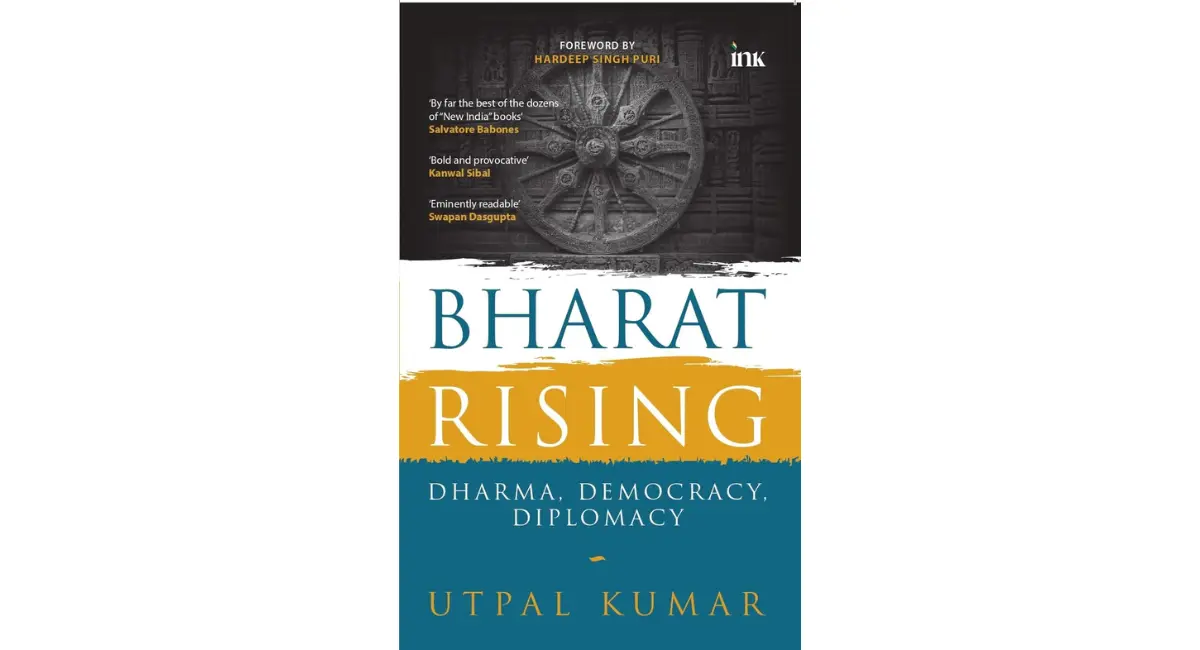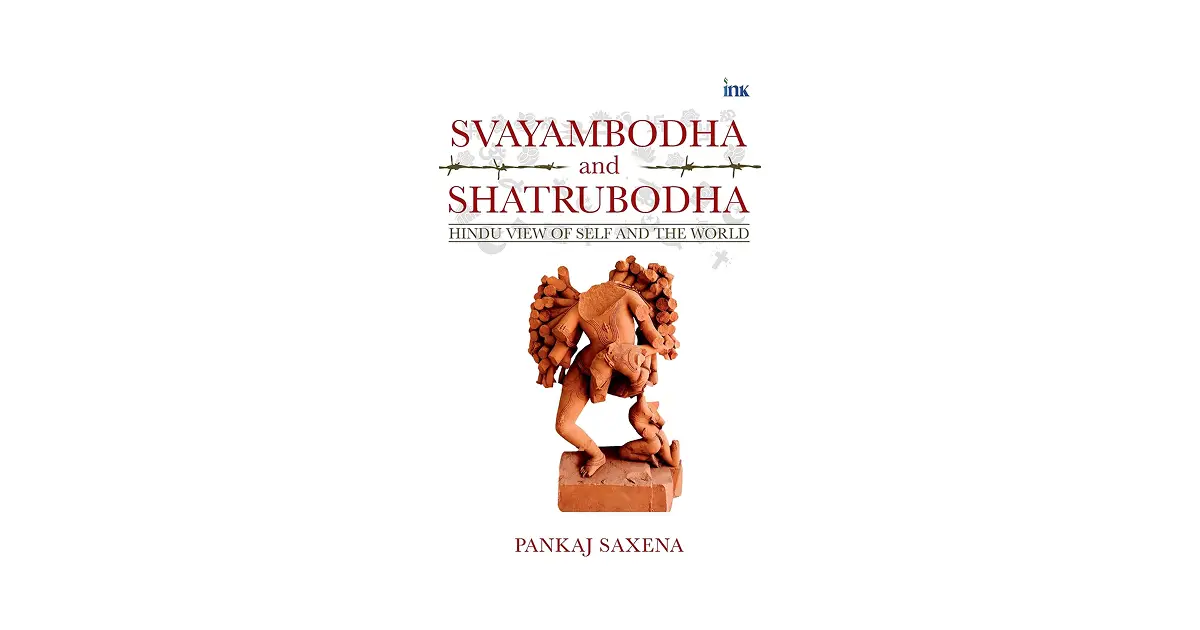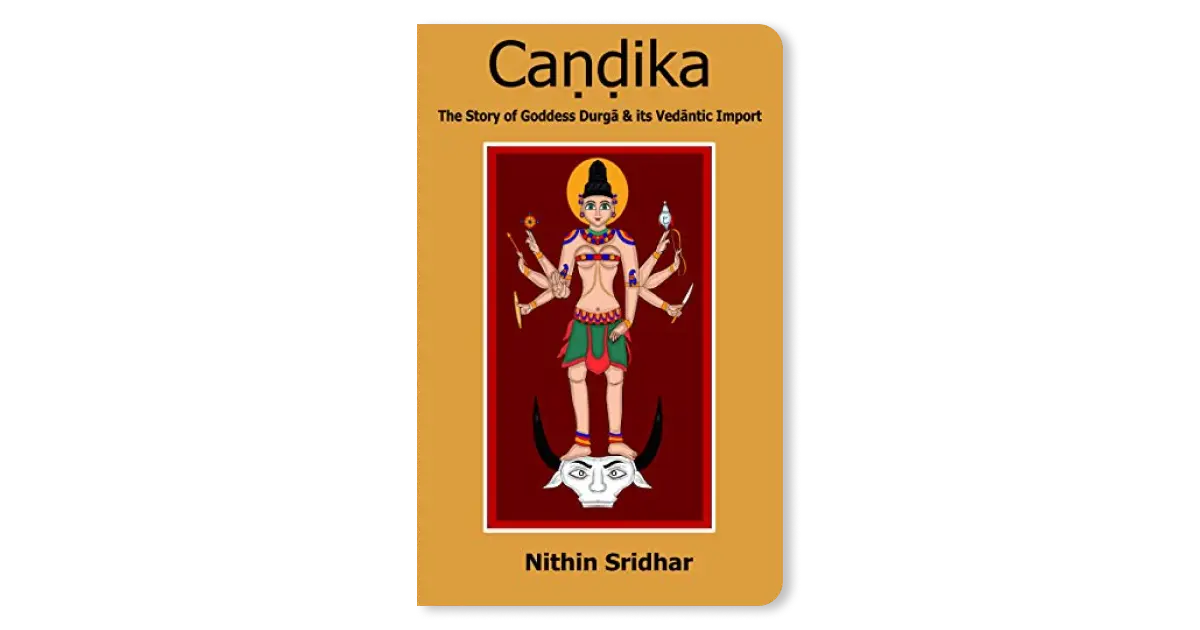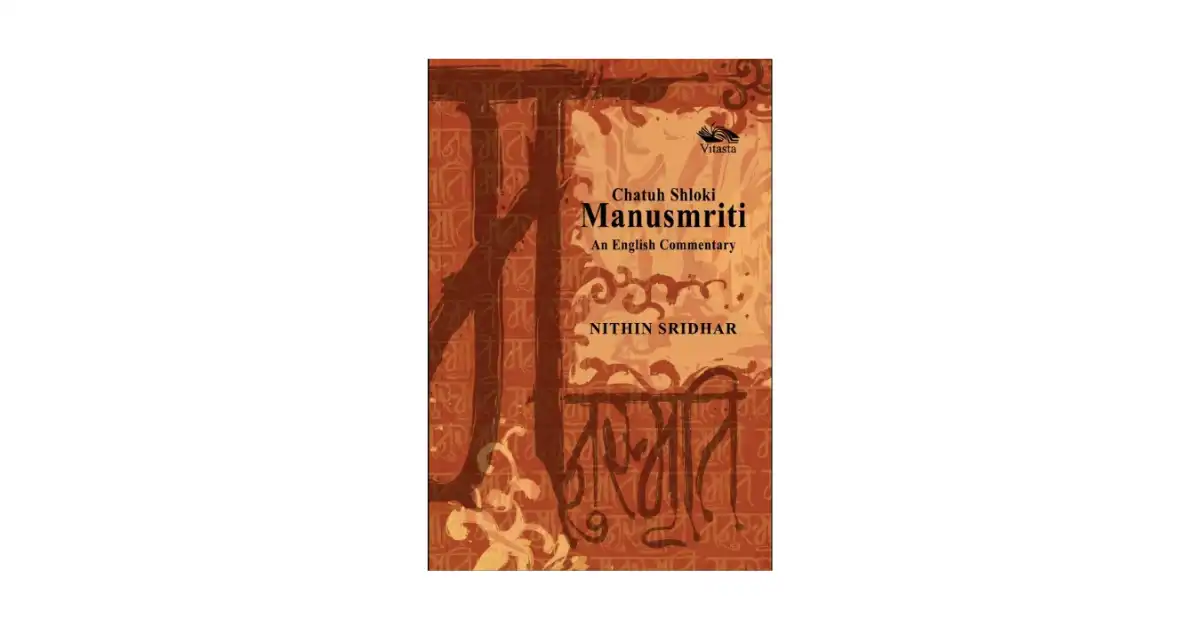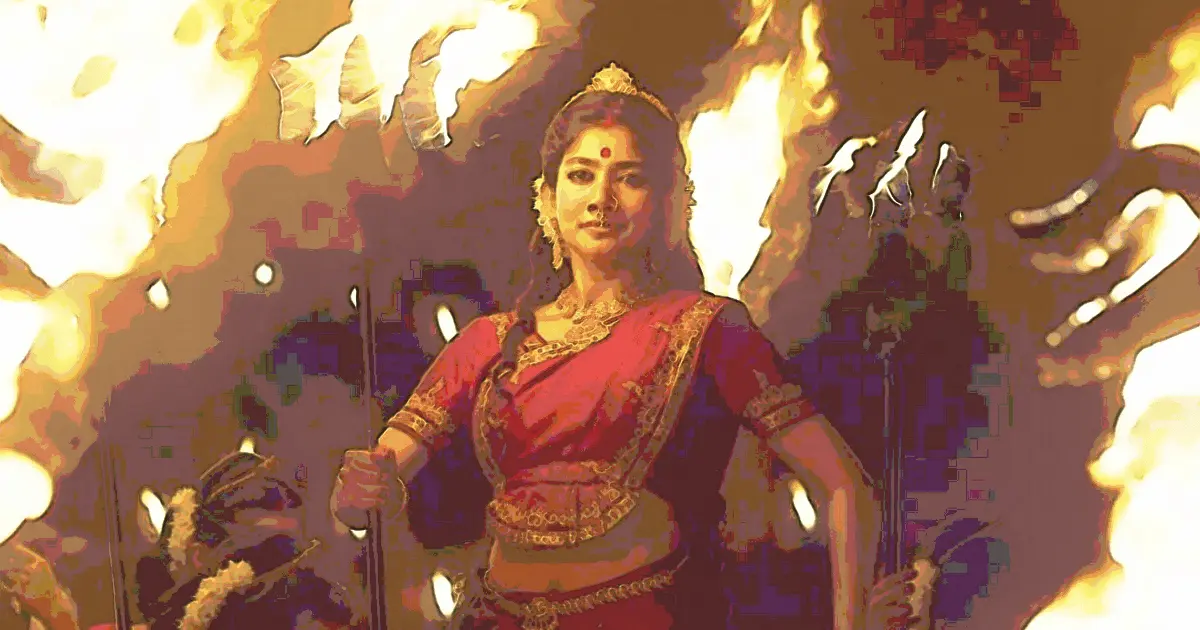Before opening the book ‘Bharat Rising: Dharma, Democracy and Diplomacy’ by journalist turned debutant author Utpal Kumar, one finds a tiny blurb on the top left by Salvatore Babones: ‘By far the best of the dozens of “New India” books’. The term “New India” is intriguing. It pertains to a genre of books that trace the trajectory and rise of today’s India to its civilizational pride. It is also a genre which has unshackled itself somewhat from the Left-Right straightjacket of the past and tries to understand India in its own terms.
This is what Sh. Utpal has done in this book, examining the causes of the subduing of Bhārata in modern day India, and then presenting his case for its current resurgence, sprinkling some well formulated journalistic insights in between.
Divided into two sections of ‘Dharma and Democracy' and 'Democracy and Diplomacy', it builds its approach ground up: from the understanding of dharma and the need of revamping our historical temples, to the rise of a confident India and its increase in soft power through deft diplomacy.
In the process, the book minces no words in calling out the ideological, religious and religio-demographic shackles holding Bhārata back. These, he adds, are aided in good measure by the Left-’liberal’ intelligentsia which serves to confuse and confound the uninformed about the nature and degree of the threat. Why do they do so, when in similarly placed China and Russia the leftist propaganda machine did not go against their national interests?
The author carefully deconstructs the process of subversion that happened in independent India under the Nehruvian dispensations, which followed disastrous socialist policies garnished with nepotistic corruption. Marxist theory of historical materialism, the author explains, prophesizes the progressive transition of human societies through six preordained stages: Primitive communism, Slave society, Feudalism, Capitalism, Socialism, and finally global, Stateless communism. Indian civilization, which has been battered but not defeated by the hordes of religiously and economically motivated invasions, upends this theory. Its innate plurality, diversity and tolerance can fit this theory only if it is considered as some kind of primitive, superstitious society.
This is what the Left intelligentsia has indulged in, pinning all evils to the Hindu heritage, and appropriating all achievements for itself and its paymasters. In this endeavor it has also gained significant success. Most mainstream intellectuals in the West and in India, carry one yardstick for Hinduism and another for other religions, especially the Abrahamic ones. Additionally, even well-meaning Indians end up being so gullible as to support those very forces that have been antithetical to their very existence.
The solution to this is suggested by the author in the second section when he discusses Pakistan and its genetically compulsive enmity against India.
The time is ripe for India to have shatrubodh (emphasis author’s). Knowing and understanding one’s enemy is the first and paramount step towards safety and survival.’
As proposed repeatedly by Śrī Pankaj Saxena, Director, Cultural Research at Bṛhat, there are two wheels which move the Bhāratīya civilization, namely,
a. Knowledge of the Self: Svayambodha and
b. Knowledge of the Non-Self: Śatrubodha.
The diplomacy of India, devoid of dharma, consistently made the blunder of trusting Pakistan and paying the price for it in blood. This is also the infirmity of the present day Hindu psyche, which in its plurality forgets to apply viveka. Cultivating śatrubodha can help overcome both external and internal enemies.
The book not only limits itself in scope with discussing recent history and its unfolding, but also dwells upon some of the issues which face the country currently. The debate around Uniform Civil Code, where nuance generally gets lost in rhetoric, is brought back into focus. The author asks, ‘when uniformization is detested at nature's level, is it wise to expect it to work at the human level?’ In the same vein, it acknowledges that the majority Hindus in this country have been shortchanged in the name of personal law codification, whereas the minority muslims have been allowed to retain their marital customs, skewing the demographic game in their favor.
Similarly, it also discusses the idea of development with a fine eye. Development is not a panacea which can magically solve every problem of India, it comes with its own set of challenges. There is a tug of opposing desires that can be explained by contrasting village life and city life. A young villager would like to explore city life; he would want the best of materialist life. But when one is at the pinnacle of material success in the metros, all one aspires to is to go back to the hills or that isolated beach in a desolate countryside.
'Development' is that apple from the Garden of Eden that leaves one repenting whether one eats it or not!
The thoughtful reader may ask, then what should be done? And that is the spirit of the book, that Bhārata can embrace modernity on its own terms and need not follow the parameters set by the West to define itself. It had a glorious history once which was powered by its civilizational wisdom, and it can again return to that role by defining its own growth and not just blindly copying the West. This also explains how Bhārata can regain the status of a viśvaguru.
The latter half of the book discusses this through the lens of diplomacy, analyzing the relationship of India with the West, China, Pakistan and Japan. With the West, India must cultivate a guarded friendship, remaining vigilant of all the state and non-state actors that work to subvert our idea of Bhārata. With China, it must hold its ground till better sense prevails. With Pakistan, every Indian must shed his Bollywood influenced bleeding heart and follow the advice of PM Śrī Narendra Modi: ‘Pakistan will die its own death, we should focus on our development’. With Japan, India must deepen its partnership by exploring the shared virtues and countering the shared adversaries.
In the final chapter, the author points out one crucial bit of information which every reader must be aware of, that of a global media which tags itself as liberal but follows an agenda which is anything but. A well oiled global order needs a strong and independent media, but till such a day, the agenda of the newsmakers must be out in the open.
Overall, Bharat Rising is indeed one of the well-written ‘New India’ books that presents a plethora of information in an easily readable and understandable format. The idea of Bhārata, which was once termed as ‘dead wood’ by Nehru, is what makes India liberal and plural, and not the Constitution. It is this idea which must be preserved and propagated, and this idea alone that explains the current rise of India. Therefore, the author is correct in stating,
[N]ever before in the past 75 years, [have] dharma and diplomacy played such an intense role in propelling Indian democracy to the league of extraordinary nations.
